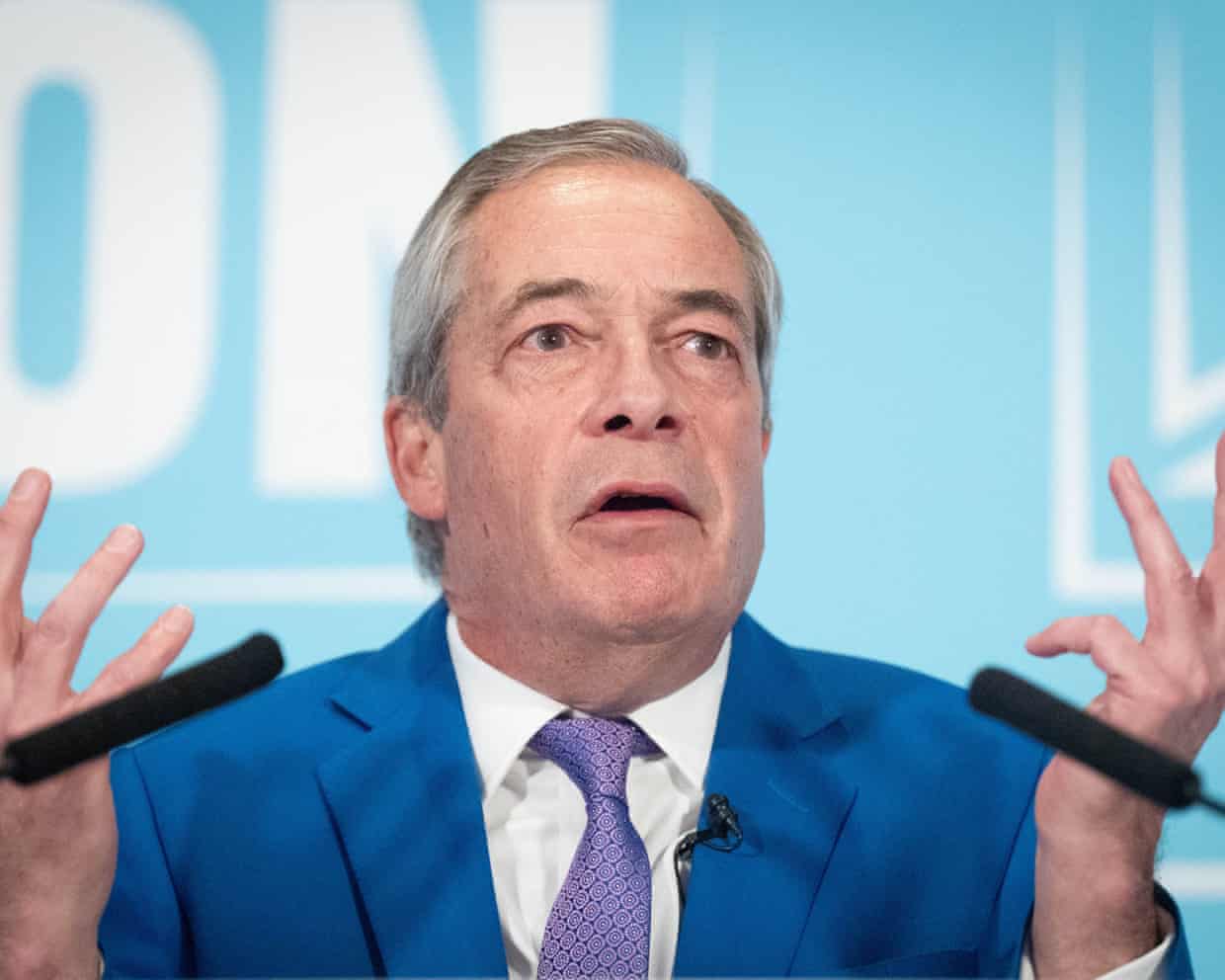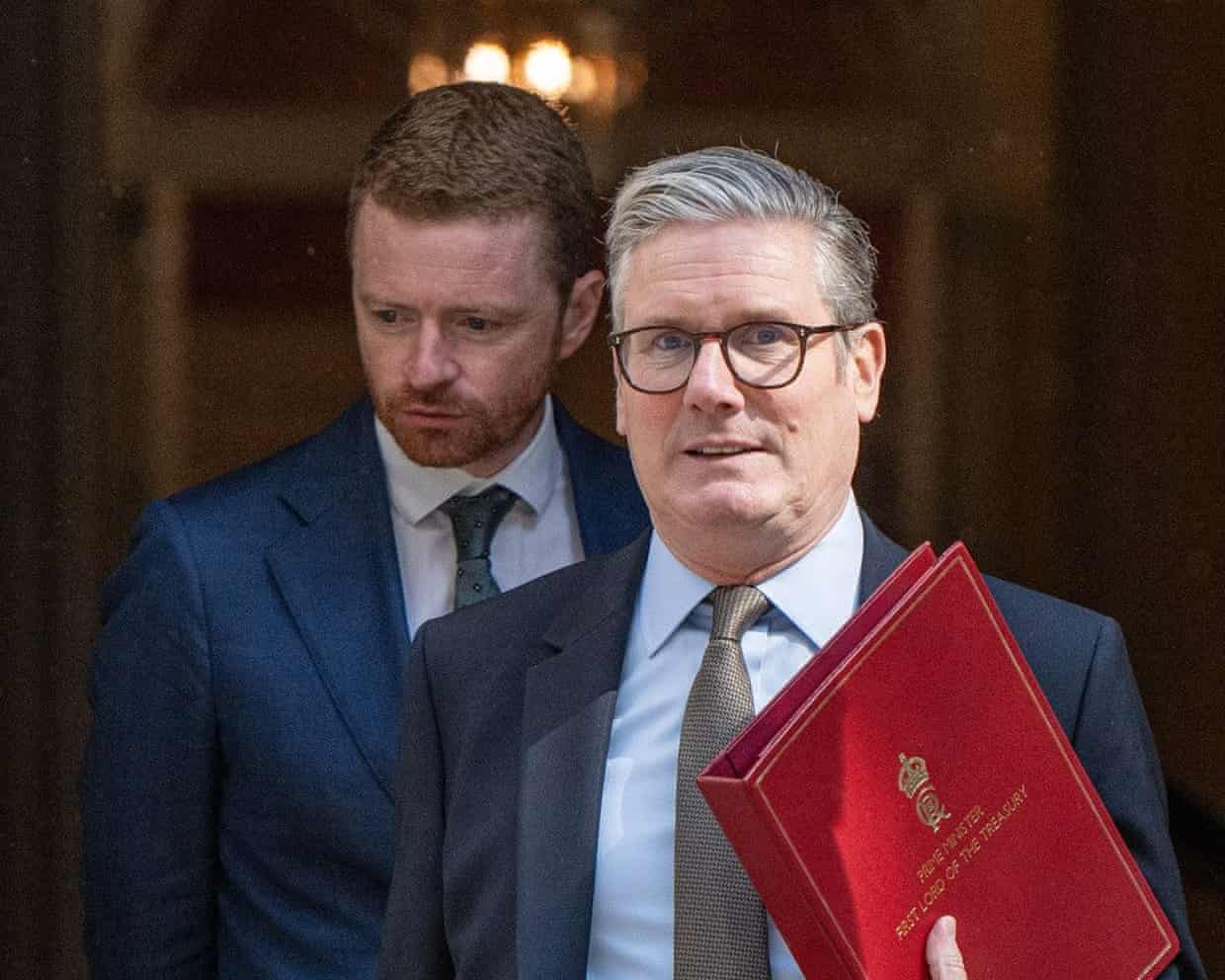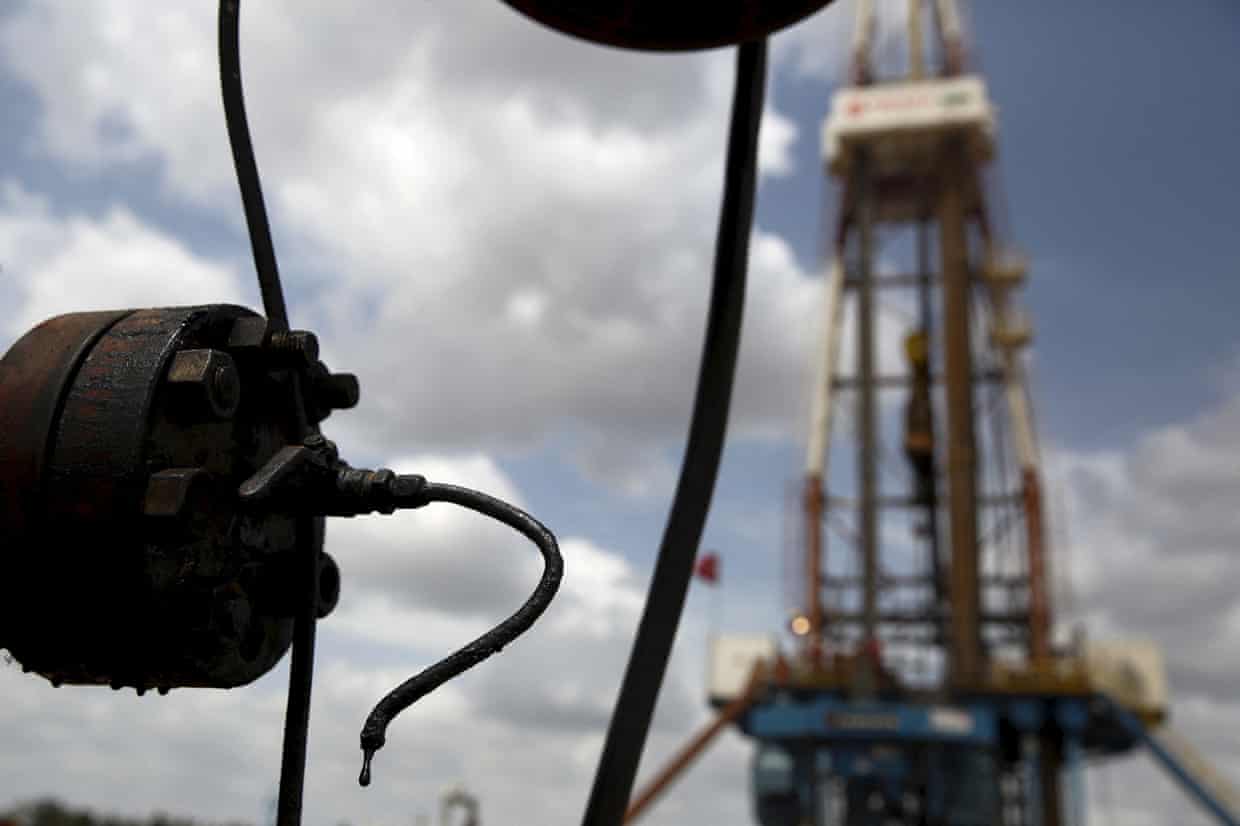
Nigel Farage dismisses racist and antisemitic school bullying claims as ‘made-up fantasies’
Nigel Farage has called allegations of racist and antisemitic bullying during his time at Dulwich college “complete made-up fantasies”, saying his accusers are “people with very obvious political motivation”.More than 30 people have spoken to the Guardian as part of an investigation based on multiple accounts of racism, including Peter Ettedgui, 61, an Emmy- and Bafta-winning director, who recalled Farage growling repeatedly “Hitler was right” or “Gas them” at him when they were at school.Farage has previously denied “directly” targeting anyone with racist or antisemitic abuse or having the “intent” to hurt anyone, and has not publicly recognised the events described. His response to claims of racism, which he was first questioned on in 2013 by the Channel 4 reporter Michael Crick, have shifted over time.In a broadcast interview in November, he said: “I would never, ever do it in a hurtful or insulting way

Desperate for attention, Nige holds marathon presser and skips PMQs | John Crace
Curious. Nigel Farage devoted decades to trying to get elected as an MP. His victory in Clacton in 2024 followed seven unsuccessful attempts in other constituencies. And now he is finally an MP, he seems reluctant to spend any time in the Commons chamber. The one place where we, the public, now pay him to be

Shadow attorney general steps back on Ukraine over Abramovich link
The shadow attorney general, David Wolfson, has recused himself from giving advice to Kemi Badenoch on Ukraine and Russia because he is representing the under-sanctions Russian oligarch Roman Abramovich in a court case, the Conservatives have announced.This would prevent him from offering advice on the possible deployment of UK troops to Ukraine in the event of a ceasefire with Russia.Lord Wolfson, who is a senior KC and a Tory peer, is part of the legal team representing Abramovich as he attempts to recover billions in frozen assets he owns in the Channel Islands.Speaking at prime minister’s questions on Wednesday, Keir Starmer criticised Wolfson’s role, telling Badenoch: “How can someone sit in her shadow cabinet, advising someone trying to escape sanctions, and pretend that their policy is to support us on sanctions?”Asked about this, Badenoch’s spokesperson said Wolfson did not sit in the shadow cabinet, and that because Jersey was a different legal jurisdiction the case had no bearing on the release of £2.5bn from Abramovich’s sale of Chelsea football club, which the UK government wants to use to help rebuild Ukraine

Labour workers’ rights concessions to cut cost to business by billions, analysis shows
Labour watering down its sweeping overhaul of workers’ rights is expected to slash the cost of the plan for UK businesses by billions of pounds, the government’s own analysis shows.According to an updated Whitehall impact assessment published on Wednesday, concessions by ministers could reduce the cost of the employment rights bill for businesses to about £1bn.An earlier version of the document had suggested the package, which includes day-one employment rights and banning zero-hours contracts, could have cost firms up to £5bn.In its revised analysis, the government said the new lower estimate reflected a decision to phase in the changes over several years, as well as “the fact that policy design and evidence have developed” since its last assessment, in October 2024.Labour’s employment rights bill finally became law last month after a lengthy legislative battle in the House of Lords, amid fierce business lobbying and after the government made a last-minute U-turn on an important element of the plan

‘Bigger than me’: road safety campaigner whose son died in collision welcomes new UK rules
For Meera Naran, the new road safety strategy is a long-awaited milestone after years of campaigning since her eight-year-old son Dev was killed in a motorway collision in 2018.As ministers unveiled plans to cut thousands of deaths by 2035, they paid tribute to campaigners, Naran in particular, whose son is commemorated with a pledge to mandate safety technology in new vehicles as “Dev’s Law”.The 2018 crash piled tragedy on her family. Naran’s father was driving Dev to visit his older brother, Neel, who was being treated in hospital.Returning on the M6, the car halted on what would been a hard shoulder, had it not been converted for use as part of a smart motorway; a lorry ploughed into them, killing Dev

Government lacks emotional link with voters, cabinet ministers warned
The government must find ways to reconnect emotionally with voters, Keir Starmer’s chief of staff, Morgan McSweeney, is said to have warned cabinet ministers, in a meeting where the prime minister said they were in “the fight of our lives”.The prime minister sought to rally his cabinet on Tuesday, telling them to ignore the polls and to prepare to take on Nigel Farage’s Reform UK.But sources said that in a presentation, ministers were told the government needed to gain back voters’ trust with three Es, emotion, empathy and evidence.One source said McSweeney warned that the government had a “deficit in emotion”, though a No 10 source denied he had used that phrase.Cabinet ministers are understood to have raised concerns about the government’s ability to connect with voters

Venezuela to continue supplying oil to US ‘indefinitely’, White House says

‘We’re in limbo’: the garden centre ‘golden mile’ that may be lost to a new town

Surprise dip in inflation a lightbulb moment – but RBA unlikely to deliver interest rate bargains | Greg Jericho

UK construction hit by worst run since global financial crisis

FCA fines two former Carillion directors for misleading investors before collapse

Australia Post apologises for losing Aboriginal artist’s painting worth $4,000